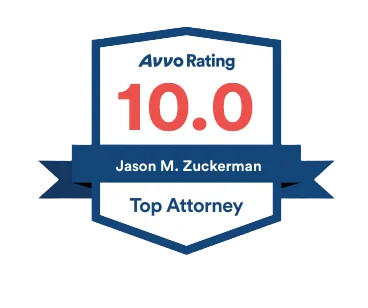Laws Barring SLAPP Suits Are an Important Tool for Qui Tam Whistleblowers
To dissuade qui tam whistleblowers from providing information to the government, some companies sue whistleblowers, alleging that whistleblowers’ use of company documents constitutes theft and breach of contractual duties. Defending against such claims can exact a significant toll on the whistleblower, including burdensome and intrusive discovery and reputational harm. Often, the company suing the whistleblower is unable to plead any harm or damages and the apparent purpose of the suit is merely to silence the whistleblower or dissuade the whistleblower from pursuing a qui tam action. Such suits are also known as strategic lawsuits against public participation or SLAPP suits.
In the approximately 28 states that have enacted anti-SLAPP laws, the whistleblower might be able to shut down a SLAPP suit early in the litigation and recover fees. Anti-SLAPP laws provide a procedural remedy to dispose of lawsuits that are brought to chill the valid exercise of constitutional rights, including the rights to free speech and petition the government for redress of grievances. A March 2018 California Court of Appeals decision in MMM Holdings, Inc. v. Reich is a good illustration of how anti-SLAPP laws are a critical tool in a whistleblower’s arsenal.
MMM Holdings’ SLAPP Suit Against Whistleblower Lawyer
MMM Holdings, Inc. (MMM) sued Marc Reich, an attorney who represented a qui tam whistleblower who took documents from MMM when MMM terminated the whistleblower’s employment for his opposition to what he perceived as fraudulent practices. MMM alleged that Reich received, wrongfully possessed, and refused to turn over 26,000 electronically stored documents from his client and was therefore liable for conversion, receipt of stolen property, and unjust enrichment. Reich also disclosed some of the documents to a third party to assist that party with litigation against MMM.
Reich filed a motion to strike the complaint under the California anti-SLAPP Law, Code of Civil Procedure section 425.16. The court granted the motion, and MMM appealed.
Prosecuting a Qui Tam Action is Protected Activity Under the CA Anti-SLAPP Statute
To prevail in an anti-SLAPP motion, Reich must show that the challenged claims arise from protected activity, and the burden then shifts to MMM to establish a probability of success (a summary-judgment-like procedure assessing whether the plaintiff has made a prima facie factual showing sufficient to sustain a favorable judgment).
Protected activity includes “any . . . conduct in furtherance of the exercise of the constitutional right of petition or the constitutional right of free speech in connection with a public issue or an issue of public interest.” Code Civ. Proc., § 425.16, subd. (e)(4). The court found that Reich’s use of the documents was done in furtherance of the right of petition or speech in connection with an issue of public interest, i.e., prosecuting his client’s qui tam action alleging that MMM overbilled the government and underpaid medical providers.
In particular, the court held that qui tam litigation “unquestionably involves a public issue or a matter of public interest in that qui tam relators initiate enforcement against wrongdoers who cause injury to the public at large.” The court relied upon its decision in People ex rel. Strathmann v. Acacia Research Corp., 210 Cal.App.4th 487 (2012), in which a relator sought recovery for false or fraudulent insurance claims and the court found that the relator met the public interest exception to the anti-SLAPP statute:
“The driving force behind the false claims concept is the providing of incentives for individual citizens to come forward with information uniquely in their possession and to thus aid the Government in [ferreting] out fraud.”‘ [Citation.] The bounty advances the public purpose and benefit by encouraging private qui tam actions; `[i]ndeed, this prospect of reward may be the only means of inducing such private parties to come forward with their information.'”
Litigation Privilege Precluded MMM From Establishing Probability of Prevailing
As for the second prong of the anti-SLAPP analysis, the court found that MMM could not establish the probability of prevailing on its claims because the litigation privilege shield Reich from liability. Significantly, the court rejected the arguments that Reich’s activities were unlawful:
“California courts consistently hold that defendants may satisfy their burden to show that they were engaged in conduct in furtherance of their right of free speech under the anti-SLAPP statute, even when their conduct was allegedly unlawful. (Taus v. Loftus (2007) 40 Cal.4th 683, 706-707, 713, [defendants’ investigation, including an interview that was allegedly fraudulently obtained, constituted protected activity]; Hall v. Time Warner, Inc. (2007) 153 Cal.App.4th 1337, 1343 [same]; Lieberman v. KCOP Television, Inc. (2003) 110 Cal.App.4th 156, 165-166 [concluding defendants’ newsgathering, including the use of surreptitious videotape recordings that were allegedly illegally obtained, constituted protected activity].)”
As Reich’s use of company documents was “reasonably relevant” to pending or contemplated litigation, such use was protected by the litigation privilege and therefore MMM could not prevail in its claims against Reich.
Qui tam relators and their counsel should be careful not to engage in unlawful conduct in gathering evidence to support a qui tam lawsuit and should be especially cautious to avoid using privileged information. But where a defendant in a qui tam action sues the relator or the relator’s counsel for using a copy of company documents to prove fraud on the government, such a claim can backfire. It can give rise to a claim of retaliation under the False Claims Act, and in states with anti-SLAPP suits, it can give rise to an anti-SLAPP motion and entitle the relator to recover fees.
False Claims Act Whistleblower Protection
To learn more about protections for qui tam whistleblowers, contact our experienced whistleblower lawyers today.









